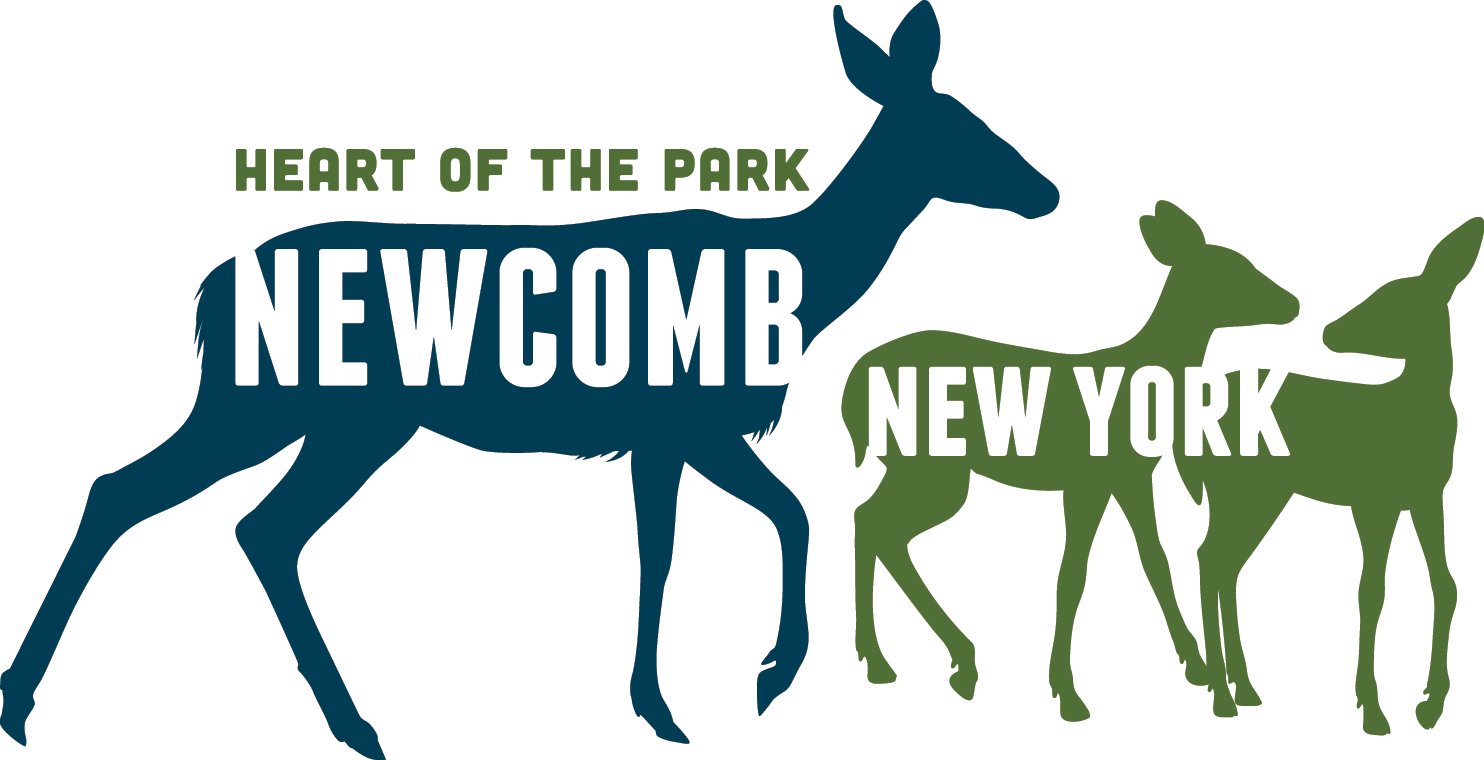History
Newcomb was established March 15th, 1828 in the “Center of the Adirondack Wilderness”. Native American legend suggests that both the Algonquin Nation and the Iroquois, or Haudenosaunee, traveled and fished the region in Colonial times.
Presidents
Teddy Roosevelt also has a place in Newcomb’s history. It was during a stay at the Tahawus Club in the township of Newcomb, that Roosevelt went hunting on Mount Marcy where we was alerted to the fact that President McKinley was near death. Roosevelt traveled from Tahwus to North Creek and it was at the train station that he was made President upon McKinley’s death. Route 28N bears a memorial plaque recognizing this historic event.
History of Newcomb
By: Bob Yandon
The town of Newcomb, in the geographical center of the Adirondack Park, was originally a part of the hunting grounds of the Iroquois and Algonguins. The first permanent European settlers arrived in 1816. Prominent among the earliest citizens were Joseph Chandler, William Butler, and Butler’s daughter Polly, who started Aunt Polly’s Inn after her marriage to Daniel Bissell. For the most part Newcomb’s initial inhabitants logged and farmed the areas near Rich Lake and later Lake Harris. The town was incorporated in 1828 and eventually became the largest township in Essex County. The logging industry, with the proximity to the forests and the Hudson River, continued to thrive and attract expert loggers from Canada as well as large New York companies like Finch & Pruyn.
As early as 1826, iron deposits were discovered by Archibald McIntyre and David Henderson at what came to be called the Upper Works. Mining continued there until the Adirondack Iron Works stopped production in 1857 as a result of difficulties extracting the impurities of titanium dioxide. The Upper Works, or Adirondac, gradually turned into what has been called the “deserted village.” During the early years of World War II, an actual need for the titanium dioxide was generated, and by 1940 National Lead Industries had started mining on the east side of Lake Sanford. Between 1941 and 1947, the community of Tahawus was built and settled for NL employees and their families. Twenty years later, however, in 1963, after a vein of ore was discovered under the village, many of the Tahawus buildings were moved twelve miles to the former Finch & Pruyn horse farm east of Newcomb. Interspersed now with other buildings, many of the relocated Tahawus homes can be seen in the section of Newcomb now known as Winebrook Hills.
By the end of the nineteenth century, the Newcomb township also provided attractive destinations and experienced guides for vacationers and sportsmen and women who enjoyed hiking the high and low peaks, hunting in the surrounding forests, and fishing in the local lakes and rivers. Several inns and cottages in Newcomb accommodated hundreds of travelers, but the two largest hotels were the Lake Harris House and the Wayside Inn, both of which burned but were later replaced with much smaller structures. Wealthy family vacationers visited and established more lasting ties to the area. Robert and Anna Pruyn developed Camp Santanoni, the largest “self sufficient” farm in the Adirondacks, now a restored Adirondack Great Camp and national landmark located on Newcomb Lake and open year-round to the public. In 1932, Archer and Anna Huntington donated their 15,000 acre Adirondack estate to the State University of New York, and since 1972, the Adirondack Ecological Center in the Huntington Wildlife Forest has been the site of scientific research and graduate education.
In order to do justice to the rich historical and cultural influences that have contributed to the character of the Newcomb region, exciting plans are underway for the construction of a newly designed building that will include a Newcomb welcome center and an expanded history center. The new structure will be located on the west side of the Newcomb Overlook.

